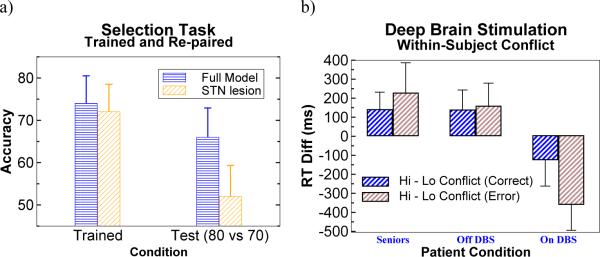Figure 3.
a) Subthalamic nucleus contributions to model performance in the probabilistic selection task. While not differing from intact networks in selection among trained low-conflict discriminations (80 vs 20 and 70 vs 30), STN lesioned networks were selectively impaired at the high conflict selection of an 80% positively reinforced response when it competed with a 70% response. The model STN Global NoGo signal prevents premature responding when multiple responses are potentially rewarding, increasing the likelihood of accurate choice (Frank, 2006). b) Behavioral results in Parkinson's patients on and off DBS, confirming model predictions. Response time differences are shown for high relative to low conflict test trials. Whereas healthy controls, patients on/off medication (not shown) and patients off DBS adaptively slow decision times in high relative to low conflict test trials, patients on DBS respond impulsively faster in these trials (adapted from (Frank et al., 2007b)).

